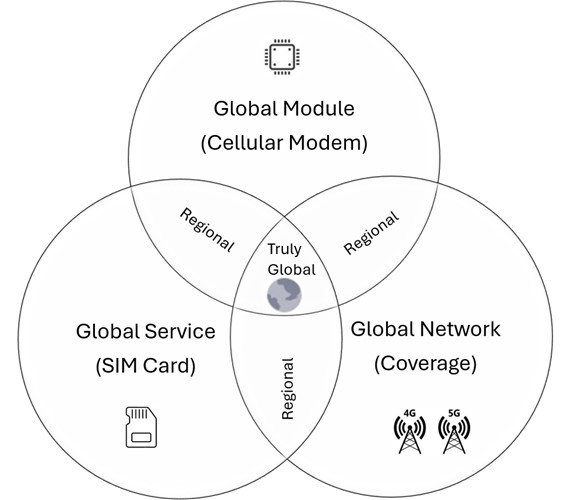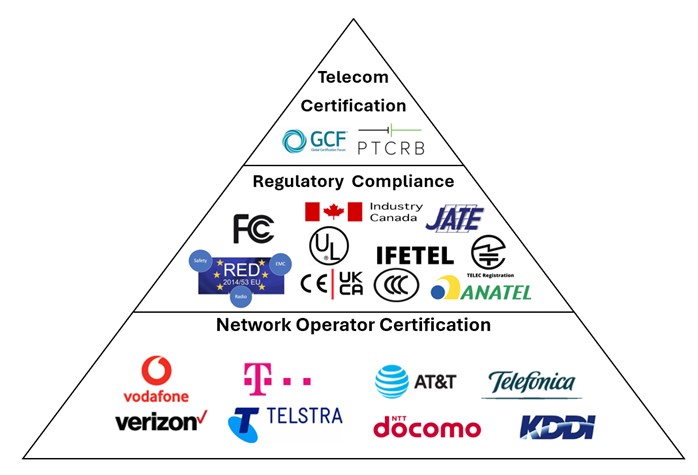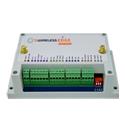
Building Truly Global Cellular Connected Products
When engaging with large OEM customers who are either designing new connected sensors/assets/gateways or upgrading existing products with 4G or 5G connectivity, there is typically a desire for universal global connectivity in a single SKU (Stock Keeping Unit). 4G and 5G are global mobile communication standards (www.3gpp.org) and todays smartphones work globally (subject to SIM card roaming agreements, www.gsma.com), so why shouldn’t the same seamless global connectivity apply to connected things (say vehicles/machinery/animals/meters etc). On some recent high-end smartphones you can now connect and send SMS messages directly via satellites1 if you don’t have cellular or Wi-Fi coverage, (think sending an SMS message if you get lost or injured while hiking in the mountains). That’s fine on consumer smartphones that have common operating systems, a common use case and huge economies of scale (billions of smartphones shipped), but for enterprise OEMs (connected transport, connected health, connected industries) who want to connect up their operations, the motivation for a single cellular product SKU (one SKU to rule them all) is typically driven by factors such as simplified shipping, logistics and backend operations. For large enterprises that serve customers in multiple continents, having a single SKU global connectivity embedded into or attached to an asset fleet can streamline global operations and reduce costs on managing product warranties, returns, long term support and maintenance. The desire for a single SKU can depend on the volume of remote assets being monitored, the value of the assets, value of remote setup/maintenance to improving customer experience, the SLA (Service-Level Agreement) around those assets and of course the number of countries, continents that an OEM may operate in.

Global Module (Cellular Modem)
Multiband and multimode 4G chipsets and modules have existed for ~10 years and global 3G/2G variants existed previously so nothing exotic about getting a global 4G chipset/module. Here are the popular Qualcomm 92072 (LTE Cat1, 3G, 2G) and more recent 92053 (LTE CatM, NB-IoT and 2G) chipsets on which many 4G modules were based as an example (EG. See latest approved chipsets and modules here from AT&Ts network – www.att.com/modules). The availability and selection of a global module is a great start but there is a “mountain in the mist” up ahead. Designing the device PCB(s) and enclosure, integrating the right antenna solution(s) to support all global 4G bands and iteratively testing RF performance to pass regional regulatory, telecom and operator certification4 needs specialized expertise but it’s not unsurmountable, and there is a well-known connected device certification process . So, in summary, you can pay a few extra dollars for a global 4G module (rather than a regional specific one) that supports all global 4G bands and has all the global module certifications (See image below), then design the electronics, housing, antenna and software to allow for global certification and deployment.

Global Service (SIM card)
4G/5G smartphones can have a global SIM card and work in most countries so surely IoT devices can too? The quick answer is “yes” IoT devices can roam onto other networks just like smartphones but there are both technical and commercial challenges that exist in doing this at continental/global scale. Firstly, roaming onto partner networks was intended to be temporary (weeks/months) and not permanent (years/decades) and several countries like Brazil and Turkey have permanent roaming restrictions (PRR) so that’s the first potential landmine in the quest for a single global SIM. Aside from PRR being a showstopper in a half dozen countries, it’s not practical for one MNO (Mobile Network Operator) to have competitive permanent roaming agreements with all other MNOs in all other regions/continents on all cellular technologies 2G/3G/4G/5G. Yes, vanilla 4G (Cat1, Cat4 etc) has existed for ~15 years so many MNO roaming agreements are mature relative to LTE CatM and NB-IoT roaming5 footprints, but there is no such single MNO SIM that roams cost effectively in all (not even most) countries. Drastic as it sounds, there is light at the end of the tunnel, as many MVNO’s (Mobile Virtual Network Operators) offer now multi-imsi (multiple MNO profiles in a single card) and flexible eSIM solutions6 that can now be leveraged to get global, universal and more seamless connectivity.
Global Network (Coverage)
Some technologies (in particular 4G LTE Cat1/Cat4) are more globally available than others because they have already been deployed in billions of smartphones for many years so if a global single SKU is required (even covering the EU as a continent) then choose carefully the technology5. For example, not all operators deploy LTE-M or NB-IoT so deployment of these technologies remains fragmented, couple that with an less mature international roaming and it can make for a drastic reduction in coverage. For LTE-M or NB-IoT in particular, customers entering new markets, can be left in tough situations where they have a global module/product but can’t get network availability in certain areas or even full counties due to the cellular technology they launched with.
Summary
When designing new connected cellular IoT products, it is possible to design for a global SKU but its critical not to sleepwalk into using the wrong cellular technology or SIM card that might restrict service/coverage availability down the line. Be especially vigilant and discerning when entering the 5G technology era7 where advanced features like network slicing will become available alongside the option of public and private networks (https://www.qualcomm.com/research/5g). Lastly, if you manage to do all of the above perfectly and build the perfect cellular product and you still can’t get coverage because you simply have to deploy products like this where cellular networks sometimes don’t exist, then there is still hope as laid out here by GSMA8 where it will be possible to have coverage through hybrid cellular/satellite offerings using 3GPP NTN9 (Recommended Reading from GSMA – www.gsma.com & Transforma Insights – www.transformainsights.com), now let’s leave it on a high with that holy grail of universal global connectivity.
For any questions regarding the discussed content, please don’t hesitate to reach out to the team via email at sales@txwireless.com.
Author:
Adrian Burns – Chief Architect at TxWireless
Connect with Adrian on LinkedIn
footnotes
-
- https://support.apple.com/en-us/105097
- https://www.qualcomm.com/products/technology/modems/qualcomm-9207-lte-modem
- https://www.qualcomm.com/products/technology/modems/qualcomm-9205-lte-modem
- https://www.gsma.com/solutions-and-impact/technologies/internet-of-things/wp-content/uploads/2019/09/IoT-Device-Certification-Report.pdf
- https://iotdevices.att.com/modules.aspx
- https://www.gsma.com/solutions-and-impact/technologies/esim/esim-specification/
- https://www.qualcomm.com/content/dam/qcomm-martech/dm-assets/documents/intelligently_connecting_our_world_with_5g_use_cases_web_1.pdf
- https://www.gsmaintelligence.com/videos/satellite-ntn-2023/
- https://www.gsma.com/solutions-and-impact/technologies/internet-of-things/gsma_resources/iot-guide-hybrid-cellular-non-terrestrial-network-ntn/



























[…] https://www.txwireless.com/blog/building-truly-global-cellular-connected-products/ […]